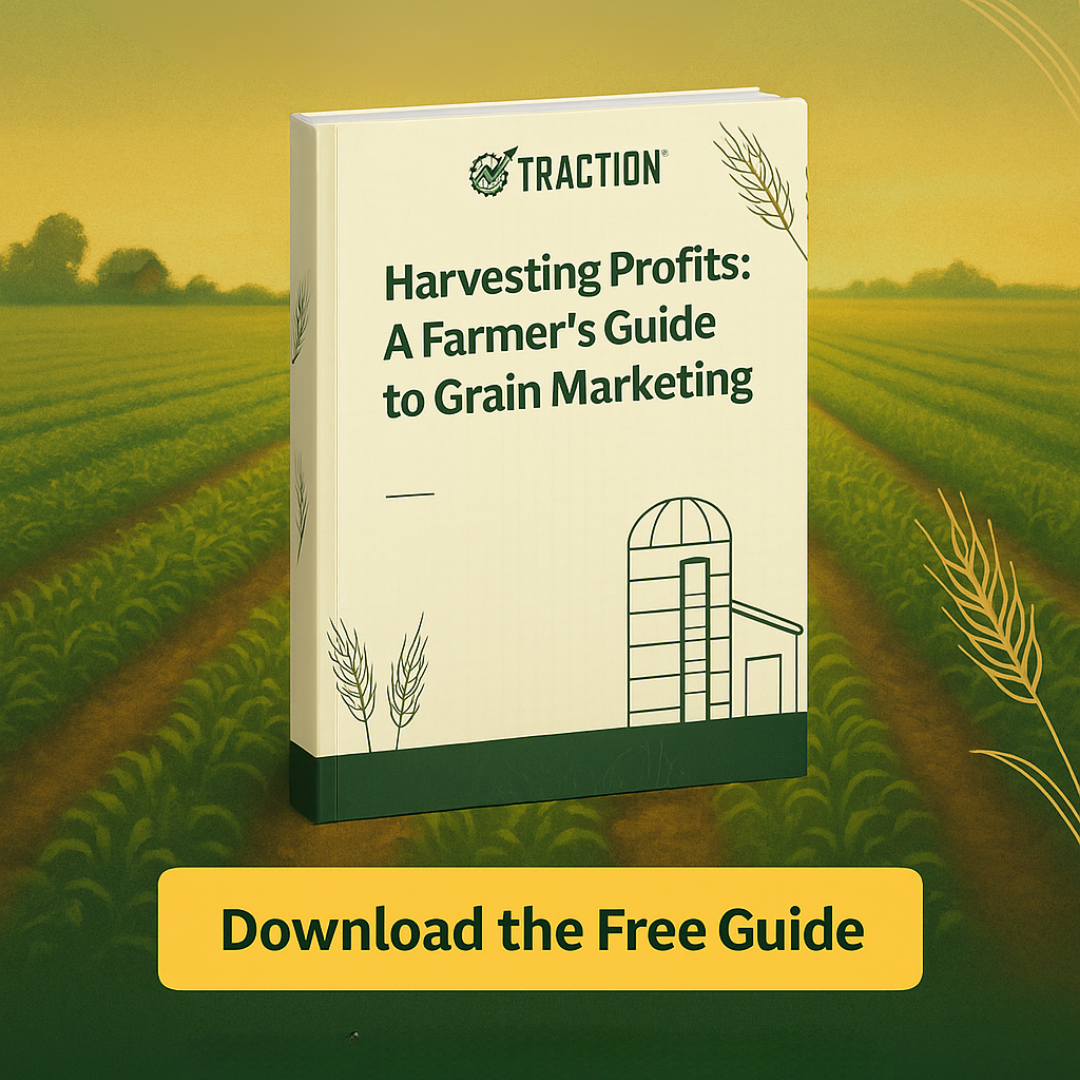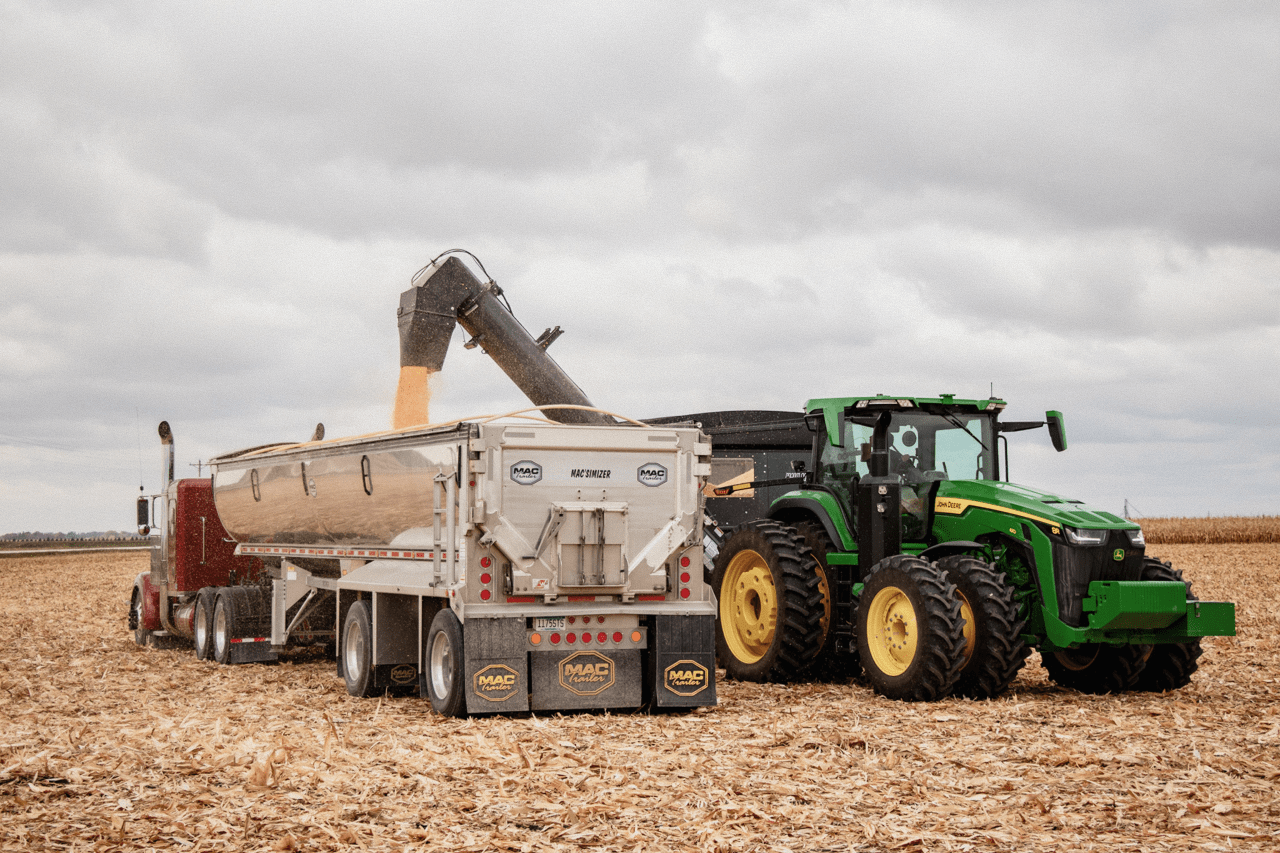What Grain Marketing and Contract Strategy is Right for My Farm?
Introduction
Grain marketing is one of the most important pieces of the puzzle when it comes to managing a profitable farm. After putting in the time, money, and effort to grow a crop, the way you sell that grain can be the difference between breaking even and turning a profit. But with all the different contract types and pricing strategies available, it can be hard to know what’s right for your operation.
Each grain contract type offers different levels of risk, flexibility, and potential reward. Some are simple and straightforward, while others offer protection from market swings or provide the chance to capture higher prices. The key is choosing the grain marketing strategy that fits your farm’s size, financial goals, and risk tolerance. In this post, we’ll walk through the most common types of grain contracts, explain how they work, and help you decide which ones might make sense for your farm.
1. Cash Sale (Spot Sale)
A cash sale is the most basic grain marketing strategy. You deliver your grain and sell it at the current market price — no contracts, no future commitments. It’s fast, easy, and pays you right away.
Why farmers choose it: It’s simple and doesn’t require planning ahead. Great for farmers who need quick cash or want to avoid complexity.
Pros:
- Immediate payment
- No contracts or paperwork
- Simple and flexible
Cons:
- No price protection
- You risk selling at a low price if the market is down
Best for: All farm sizes, especially those needing quick cash flow or with limited storage.
2. Forward Contract
A forward contract allows you to lock in a price for your grain before harvest. You agree to deliver a set amount at a future date for a fixed price.
Why farmers choose it: It provides price certainty and helps with budgeting and cash flow planning.
Pros:
- Guaranteed price
- Helps manage income expectations
- Reduces marketing stress during harvest
Cons:
- If prices rise after you lock in, you miss out
- You must deliver the agreed quantity — risky if your yield falls short
Best for: Medium to large farms with predictable yields and solid production plans.
3. Basis Contract
With a basis contract, you lock in the basis (the local cash price minus the futures price) but leave the futures price open to be set later. It lets you secure local market pricing while waiting for futures markets to move.
Why farmers choose it: They want to capture a strong local basis now but believe futures prices might improve.
Pros:
- Flexibility to set futures price later
- Locks in local market advantage
Cons:
- Exposed to futures market risk
- Still need to decide when to finalize pricing
Best for: Medium to large farms with market awareness and local pricing opportunities.
4. Hedge-to-Arrive (HTA) Contract
HTA contracts lock in a futures price while allowing the basis to be set later. This is the opposite of a basis contract.
Why farmers choose it: They want to lock in a strong futures market price but wait on local delivery terms or basis to improve.
Pros:
- Protects against futures price drops
- Gives flexibility on delivery location and timing
Cons:
- Exposed to basis changes
- May have contract restrictions
- More complex to manage
Best for: Large operations that are comfortable with market strategy and want flexibility.
5. Minimum Price Contract
This contract lets you set a price floor (a minimum you’ll receive), while still giving you the chance to benefit if the market goes up. It typically involves an option contract.
Why farmers choose it: They want downside protection without completely locking out the potential for higher prices.
Pros:
- Sets a guaranteed minimum price
- Allows upside potential
Cons:
- Premium cost for the contract (like buying insurance)
- More complex
Best for: Medium to large farms wanting price security in volatile markets.
6. Options (Put/Call)
Options give you the right, but not the obligation, to buy or sell grain at a specific price. A put option protects against lower prices, while a call option is used to re-own grain or speculate.
Why farmers choose it: They want flexibility and are comfortable with marketing tools.
Pros:
- Flexible strategy for both risk management and speculation
- Can be tailored to specific price goals
Cons:
- Cost of the premium
- Requires knowledge or guidance to use well
Best for: Large farms or farmers working with a marketing advisor.
7. Futures Contracts
This involves trading directly on commodity exchanges. You can lock in a price for grain months in advance and offset the contract later or deliver the grain.
Why farmers choose it: They want full control and are comfortable with active marketing.
Pros:
- Total market control
- Precise price protection
Cons:
- High risk
- Requires margin account and active management
- Complex and time-consuming
Best for: Very large farms or those with professional marketing teams.
8. Deferred Payment Contract
With this strategy, you sell the grain now but delay getting paid until a future date — often the next tax year. It’s not about price, but about timing income.
Why farmers choose it: To manage taxable income and defer revenue.
Pros:
- Can reduce tax burden
- Smooths out income across years
Cons:
- Doesn’t improve grain price
- Risk if buyer fails to pay later
Best for: Any farm working with a tax advisor to plan income.
9. Pooling / Cooperative Marketing
In this approach, your grain is pooled with that of other farmers and marketed by a cooperative or professional grain marketer. You get paid based on the average sale price.
Why farmers choose it: To take the guesswork out of marketing and let someone else handle the sales.
Pros:
- Shared risk
- Less marketing stress
- Access to expert pricing
Cons:
- Less control
- Can result in average or below-average returns
Best for: Small to medium farms or anyone wanting a hands-off approach.
Grain Marketing Comparison Chart
.png)
Final Thoughts
There’s no one-size-fits-all answer when it comes to grain contracts — and that’s a good thing.

The flexibility of different strategies allows you to tailor your approach to fit your farm’s size, risk tolerance, storage capacity, and cash flow needs. In many cases, the best grain marketing plan will involve a mix of these contracts to spread out risk and maximize opportunity.
As with any business decision, the most profitable farmers are the ones who understand their options and make informed choices. Grain marketing isn’t just about selling a crop — it’s about managing risk, planning ahead, and keeping your operation strong year after year.
Ready to take your marketing strategy to the next level? Download The Ultimate Guide to Grain Marketing Strategy and check out our free grain marketing calculator. It’s a complete, farmer-friendly resource packed with tips, contract breakdowns, and planning tools to help you make confident, profitable grain marketing decisions. Get your free copy here.
Farm accounting that just works.
Tired of hacking workarounds in software that wasn’t built for farms? We made Traction Ag just for you.

Agape Farms in Ohio



